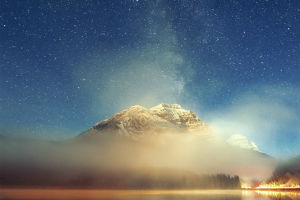The Greenland region is the world's second coldest after Antarctica, with no rain and only snow throughout the year, and an average temperature of only -7°C. Due to the harsh climate, only 5.6 percent of the world's population resides in this region.
Because of the harsh climate, only 56,000 Inuit and Danes live on this island. They wear clothes and hats all year round and are covered tightly, but in recent days, they almost wear short sleeves and shorts on the street.
Days of high temperatures have turned this second-coldest place in the world upside down.
Most of Greenland is located in the Arctic Circle, a typical polar climate, the sun does not set in the summer half of the year, the winter half of the year is without solar radiation, and the island is cold all year round.
Greenland is 80% covered by ice, with a total area of 1,833,900 square kilometres, making it the second-largest ice cap in the world.
Because Greenland is of great research value, researchers are stationed there year-round. In recent days, Kutalmersh Sayram, a Texas researcher stationed on this island, and colleagues have often left the house in their shirts, a surprising thing.
A survey by the Danish Meteorological Institute found that Greenland's temperatures are higher than in previous years, having reached more than 20 degrees Celsius. Greenland is located within the Arctic Circle, the world's largest island and a self-governing territory of Denmark.
The ice cap on it is the second largest in the world after the Antarctic ice cap, with a total area of 1.8 million square kilometres. Although the melting comes every summer, this year the melting speed is too fast.
According to statistics, 8 billion tons of ice caps are melted every day, which is twice as fast as before.
Greenland's ice cap is the largest in the entire northern hemisphere, with an average temperature of about -31 degrees Celsius. Such a large ice cap plays a big role in ecology, but since the 1970s, the ice cap has been melting.
Now that the glacier melt has broken records, many believe that the countdown to the disappearance of Greenland's ice cap has been entered. If the ice cap melts, the sea level will rise by seven meters, which will be a huge disaster for the earth and human beings.
Today's Greenland ice cap has disappeared a lot, leaving only one-seventh of what it was 18,000,000 years ago. According to the current melting rate, no matter how big the ice cap is, it will disappear one day, and it is a wake-up call to all humans.
Experts predict that the melting of Greenland's ice cap will take approximately one thousand years, during which time a large continent will be submerged by seawater, causing great changes to the entire Earth and human society.
Low-lying places, such as London, are likely to be lost to the sea. Additionally, the melting of the ice cap will release a large amount of carbon stored within it, resulting in a rise in global temperatures.
Plant growth and human survival will become problematic, and by then it will be too late to regret it, with little that can be done to undo the damage. The Greenland ice cap has been formed over a long period, and once it is gone, it will never be restored.
Previously, MIT researchers calculated that human society will decline by 2040.


